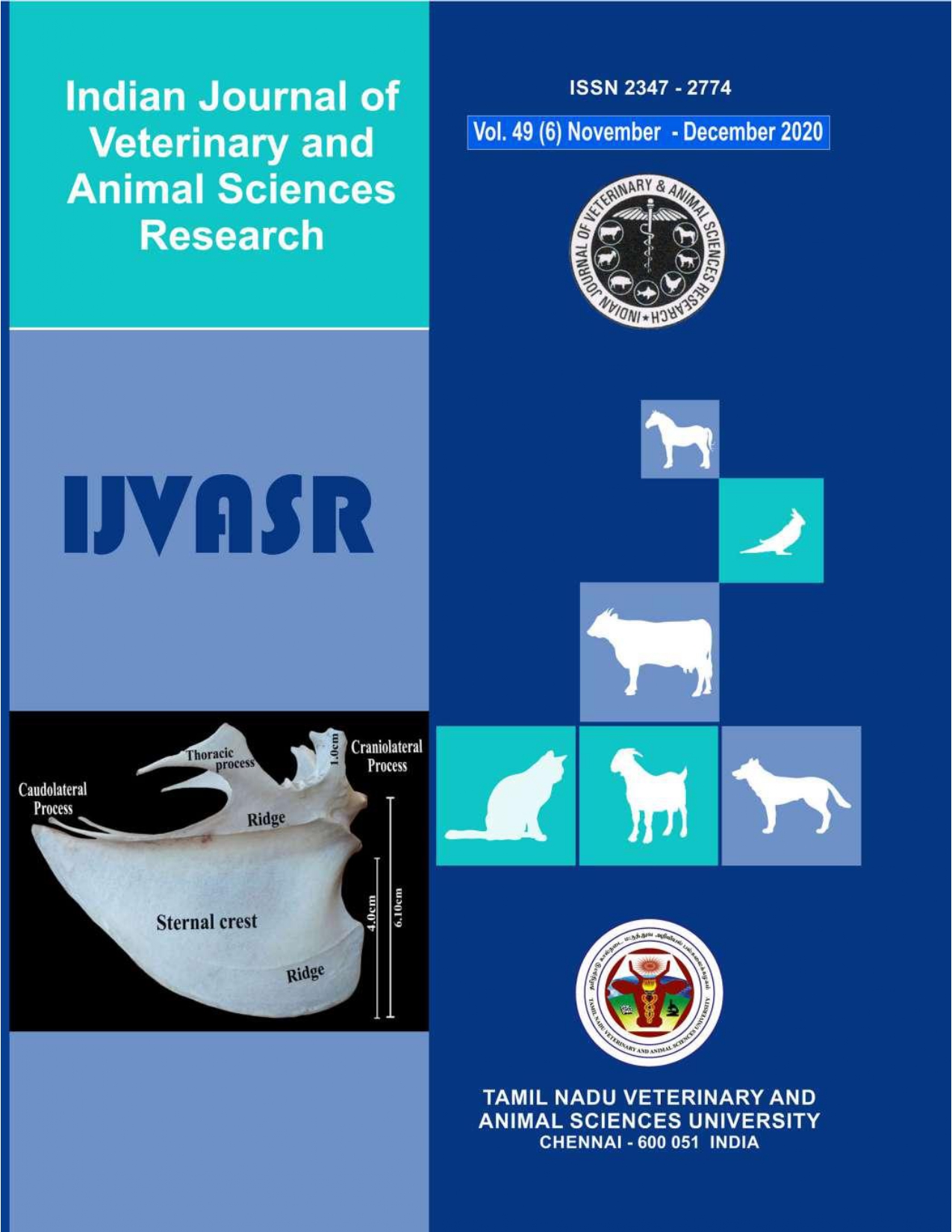EFFECTS OF DIFFERENT EXTRACTION CONDITIONS ON YIELD OF ANTHOCYANIN CONTENT FROM Moringa oleifera LEAVES
Keywords:
Anthocyanin, Moringa oleifera, pH, Solvents, Temperature, TimeAbstract
This study was aimed to identify the better extraction conditions for anthocyanin from fresh and dry leaves of Moringa oleifera. The variables used in this study were solvents (aqueous, ethanol, methanol) and each solvent added with acidified agents (1% citric acid, 0.1% HCl and 1% acetic acid), temperatures (40, 50, 60, 70 and 80ºC), steeping times (60,
90, 120, 150, 180 and 210 min) and pH (1, 3, 5, 7 and 9). Study showed that the anthocyanin content was higher for fresh leaves of moringa extracted with test solvent methanol acidified with 0.1% HCl. From the results, extraction at 60ºC for 120 min at pH of 3 was observed as the optimum combination for the yield of maximum anthocyanin content. However, for food purposes, moringa fresh leaves are recommended to be extracted with ethanol (acidified with 1% citric acid). The yield of anthocyanin, at optimised extraction conditions, was found to be 0.359 ± 0.0005 mg C3G/g.
Downloads
References
Bagchi D. A., Garg, R.L., Krohn, M., Bagchi, M., Tran X. and Stohs, 1997. Oxygen free radical scavenging abilities of vitamins C and E, and a grape seed proanthocyanidin extract in vitro. Research communications in molecular pathology and pharmacology, 95: 179 – 189.
Haminiuk C.W.I., Plata-Oviedo, M.S.V., de Mattos, G., Carpes S.T. and Branco, I.G. (2014). Extraction and quantification of phenolic acids and flavonols from Eugenia pyriformis using different solvents. Journal of Food Science and Technology, 51(10): 2862-2866.
Kano M., Takayanagi, T., Harada, K., Makino, K. and Ishikawa, F. (2005). Antioxidative activity of anthocyanins from purple sweet potato, Ipomoea batatas cultivar ayamurasaki. Bioscience, biotechnology, and biochemistry, 69: 979-988.
Khoo H.E., Azlan, A., Tang S.T. and Lim, S.M. (2017). Anthocyanidins and anthocyanins: coloured pigments as food, pharmaceutical ingredients, and the potential health benefits. Food and nutrition research, 61(1): 1361779.
Lee J., Durst R.W. and Wrolsta, R.E. (2005). Determination of total monomeric anthocyanin pigment content of fruit juices, beverages, natural colorants, and wines by the pH-differential method: Collaborative study. Journal of AOAC International, 88(5): 1269-1278.
Lin, M., Zhang, J. and Chen, X. (2018). Bioactive flavonoids in Moringa oleifera and their health-promoting properties. Journal of functional foods, 47: 469-479.
Luo, H., Deng, S., Fu, W., Zhang, X., Zhang, X. Zhangandm Z., Pang, X. (2017). Characterization of active anthocyanin degradation in the petals of Rosa chinensis and Brunfelsia calycina reveals the effect of gallated catechins on pigment maintenance. International journal of molecular sciences, 18(4): 699.
Martín, J., Navas, M.J., Jiménez- Moreno, A.M. and Asuero, A.G. (2017). Anthocyanin pigments: Importance, sample preparation and extraction. Phenolic compounds– Natural sources, importance and applications. InTech, 117-152.
Miguel, M. G., (2011). Anthocyanins: Antioxidant and/or anti-inflammatory activities. Journal of Applied Pharmaceutical Science, 1(6): 7-15.
Nayal K and Babarb, O.A. (2017). Optimization of Primary Extraction Conditions of Anthocyanin from Morus rubra L. by Solvent Extraction Method. International Journal of Engineering Science and Research Technology, 4(10): 985-996.
Omede, A. (2016). Total polyphenolic content and antioxidant properties of Moringa oleifera leaf extracts. Animal Research International, 13(2): 2454-2462.
Padayachee, B and Baijnath, H. (2012). An overview of the medicinal importance of Moringaceae. Journal of Medicinal Plants Research, 6: 5831–5839.
Rasha Mohamed K, Ahmed Gibriel, Y., NagwaRasmy, M.H., Ferial, M. Abu-Salem, (2016). Extraction of Anthocyanin Pigments from Hibiscus sabdariffa L. and Evaluation of their Antioxidant Activity. Middle East Journal of Applied Sciences, 6(4): 856-866.
Rice-Evans C., Miller N.J. and Paganga, G. (1996). Structure-antioxidant activity relationship of flavonoids and phenolic acids. Free radical biology and medicine, 20: 933-956.
Shm, T., Kassim, N.E., Abou Rayya M.S. and Abdalla, A.M. (2017). Influence of foliar application with Moringa (Moringa oleifera L.) leaf extract on yield and fruit quality of Hollywood plum cultivar. Journal of Horticulture, 4(193): 1-7.
Swer T. L., Chauhan, K., Paul, P.K., Mukhim, C., Bashir K. and Sehrawat, R. (2018). Production and optimization of anthocyanin-rich food colorant extracted from Prunus nepalensis L. (Sohiong). Pigment & Resin Technology, 47(6): 453-463. https:// doi.org/10.1108/PRT-04-2018-0040
Udikala, M., Verma, Y., and Sushma, S.L. (2017). Phytonutrient and pharmacological significance of Moringa oleifera. International Journal of Life Sciences and Scientific Research, 3(5): 1387-1391.
Vats, S and Gupta, T. (2017). Evaluation of bioactive compounds and antioxidant potential of hydroethanolic extract of Moringa oleifera Lam. from Rajasthan, India. Physiology and molecular biology of plants, 23 (1): 239-248.
Vergara-Jimenez, M., Almatrafi M.M. and Fernandez, M.L. (2017). Bioactive components in Moringaoleifera leaves protect against chronic disease. Antioxidants, 6(4): 91.
Wahyuningsih, S., Wulandari, L., Wartono, M.W., Munawaroh, H. and Ramelan, A.H. (2017). The effect of pH and colour stability of anthocyanin on food colorant. In IOP Conference Series: Materials Science and Engineering, 193, 012047. IOP Publishing. https://iopscience. i o p . o rg / a r t i c l e / 1 0 . 1 0 8 8 / 1 7 5 7 - 899X/193/1/012047. Accessed 04 May, 2021
Wallace, T.C., and Giusti, M.M. (2015). Anthocyanins. Advances in Nutrition, 6(5): 620-622.
Downloads
Submitted
Published
Issue
Section
License
All the copy right belongs to the sponsoring Organization, Tamil Nadu Veterinary and Animal Sciences University, Chennai - 51.

